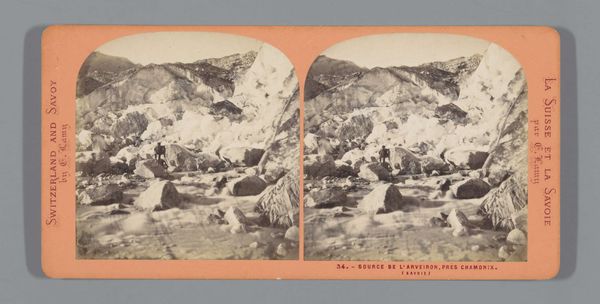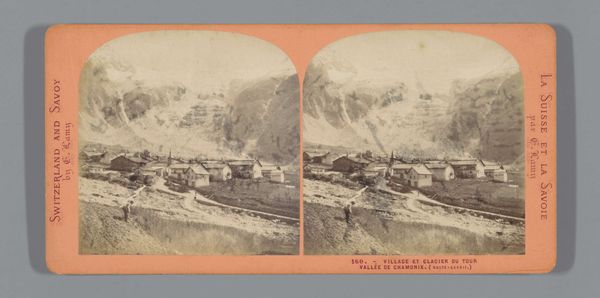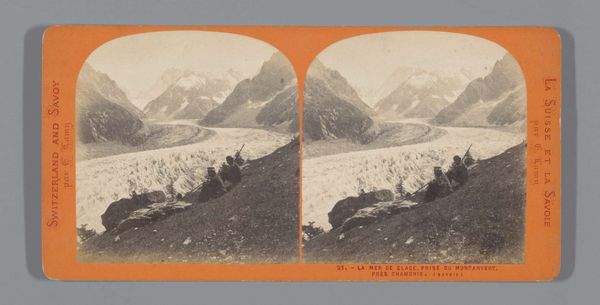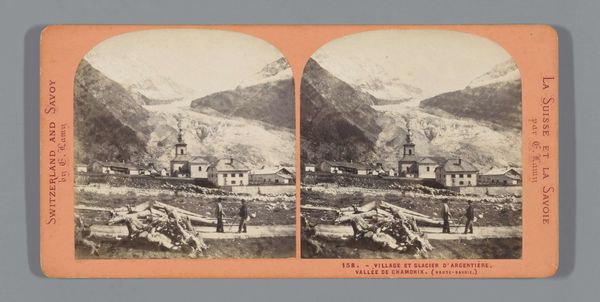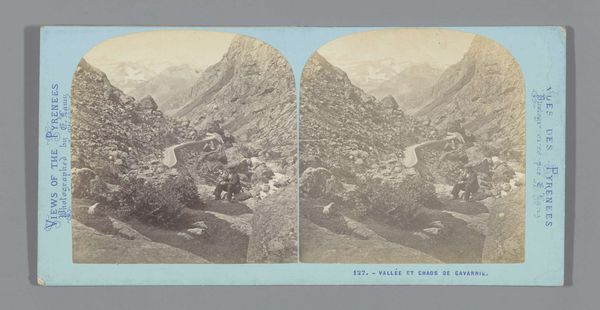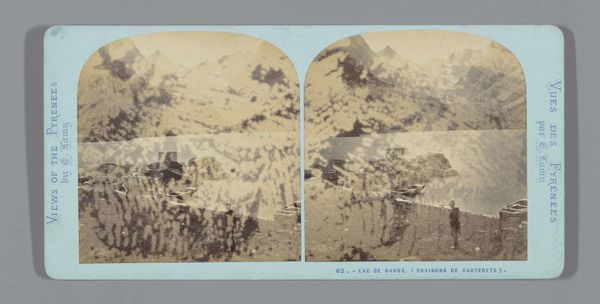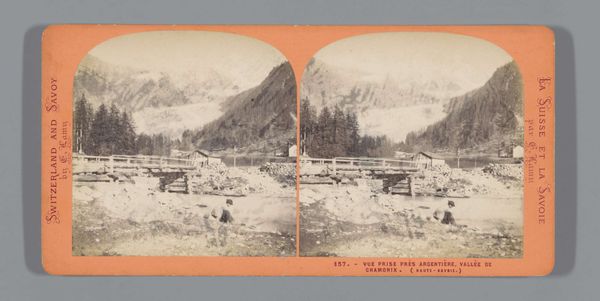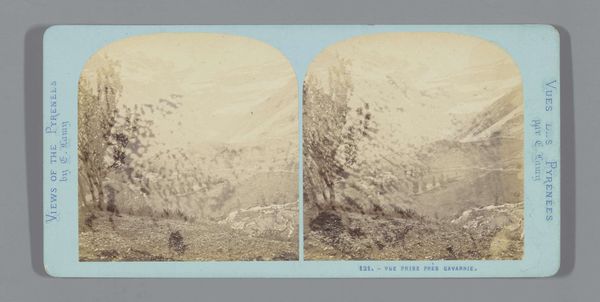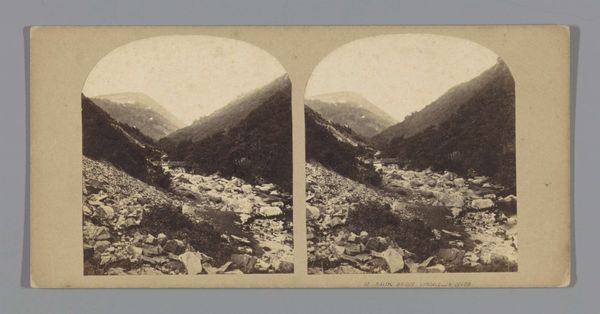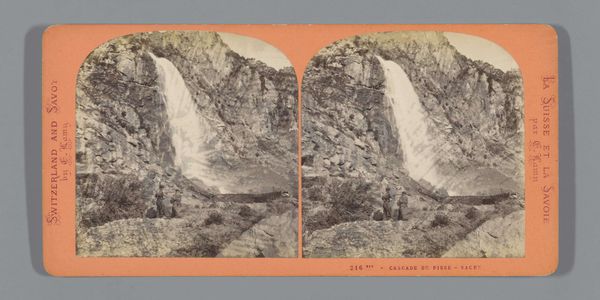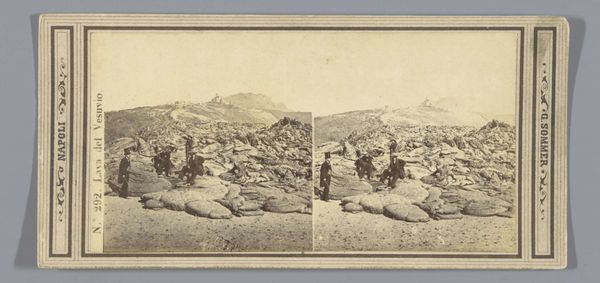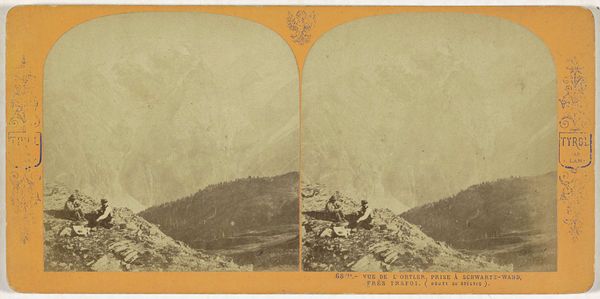
Dimensions: height 85 mm, width 170 mm
Copyright: Rijks Museum: Open Domain
Curator: Let's delve into this stereoscopic image by Ernest Eléonor Pierre Lamy, titled "Mer-de-Glace near Chapeau," created sometime between 1860 and 1880. Editor: Bracing! The sheer scale of the glacier looming above, the precarious scree slopes, it’s a sublime vista of the Romantic era, really highlighting nature's grandeur. Curator: The rise of mountain tourism played a significant role here. In the mid-19th century, viewing locations, like Chapeau, became quite popular, along with alpine imagery distributed on a mass scale. Editor: The very form of this stereoscopic image also creates an effect; we aren’t just seeing a glacier, but experiencing it, practically on location. The repeating figures— are those guides perhaps?— enhance the impression of entering another realm. I notice they are small, and seem vulnerable... the old symbols of man confronted by the monumental forces of nature. Curator: Exactly! The market for these images allowed many photographers such as Lamy, whose name features prominently here, to thrive. These works were a vehicle for spreading idealized and dramatic views. The stereoscopic format played perfectly into Victorian society's appetite for both scientific accuracy and visual escapism. Editor: This aesthetic and its icons are a mirror. It allowed, and still allows us to come face-to-face with ideas about danger and the small place man has among it all. Even today we hold onto our collective symbol vocabulary about sublime landscapes: nature can be simultaneously feared, admired, and enjoyed. This particular place has deep, embedded associations. Curator: Indeed. It is easy to romanticize our viewing. Looking at this now, however, with the knowledge of glacial melt, the photograph, meant to capture something immense and eternal, takes on a somewhat melancholy meaning. Editor: I find that even this visual memento, by capturing that frozen world and what it means in the flow of human culture, grants this artwork another life still.
Comments
No comments
Be the first to comment and join the conversation on the ultimate creative platform.
